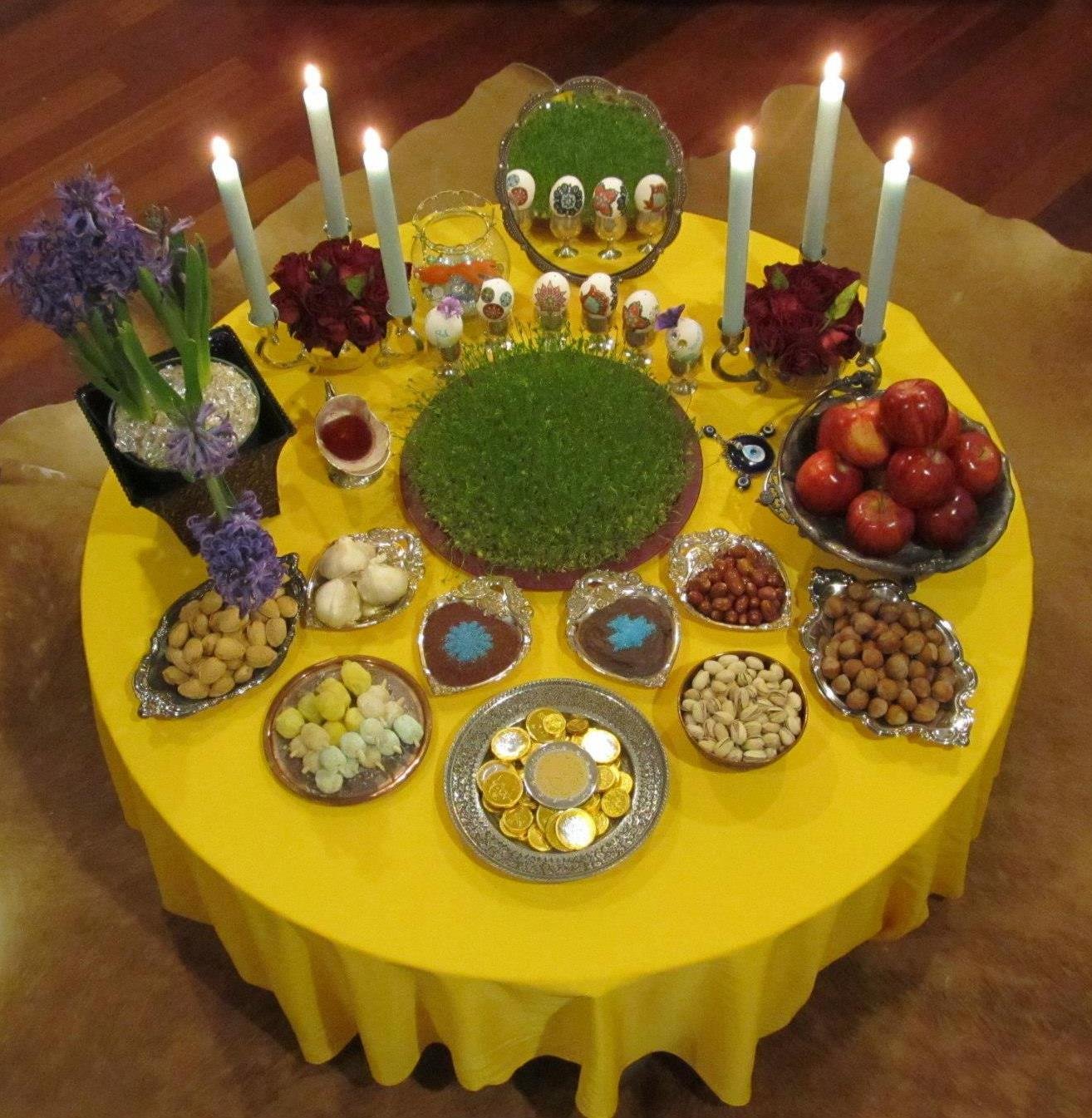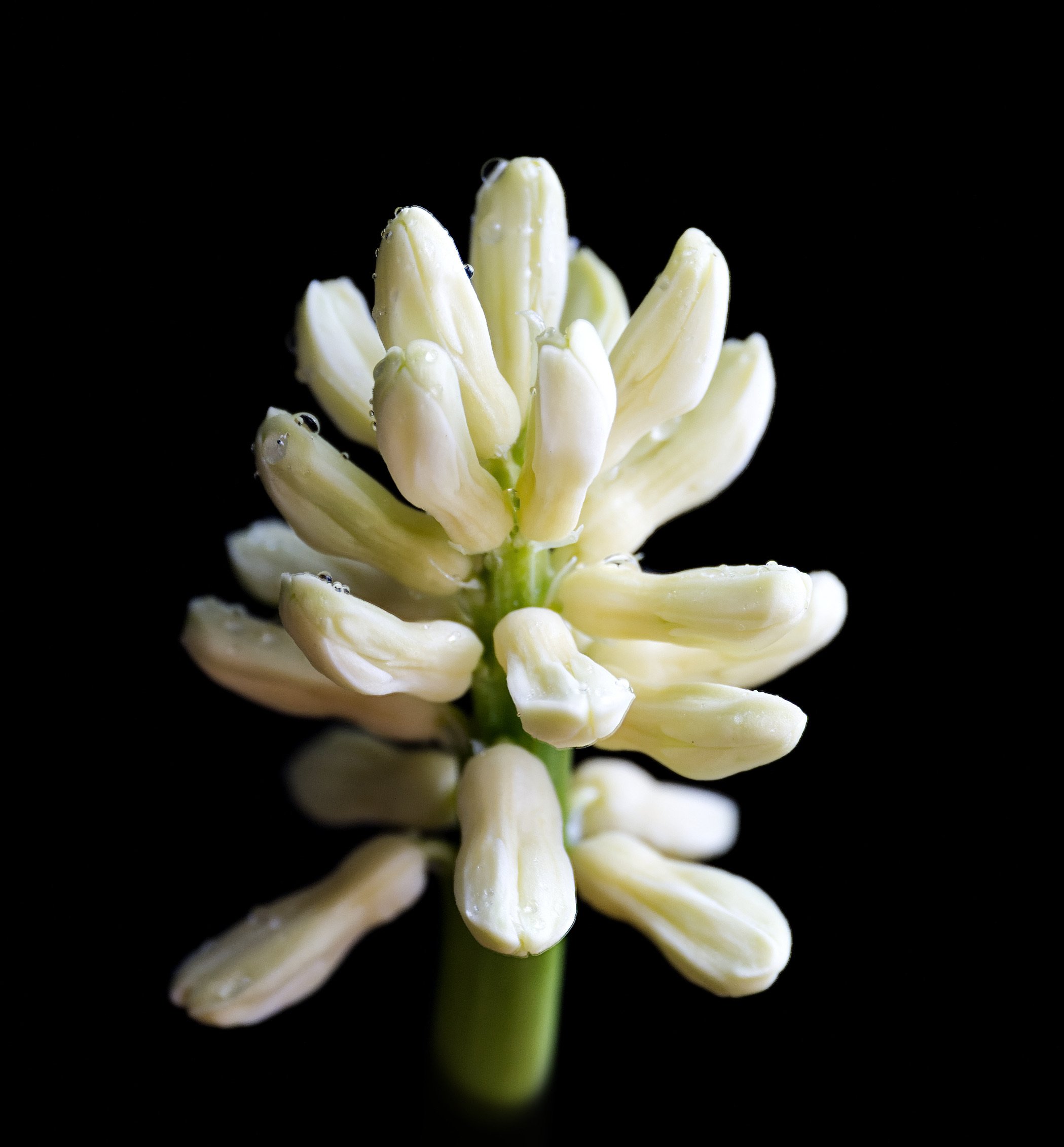The Hyacinth
The history of the Hyacinth, why they’re celebrated in Iran, and the propagating power of myrmecochory.
Hyacinth orientalis, April 5th
Haft Seen traditional table of Nowruz
The beginning of the Iranian new year, referred to as Nowruz (or “new Day’), has been celebrated on or around March 21st for over 3000 years. It is epitomized by the Haftsin or Haftseen, a practice of placing seven symbolic objects together whose names commence with the letter ‘seen’, sounding similar to our ’ess’. It looks like this: “س" Haftseen comes from ‘haft’ meaning seven and ‘seen,’ the aforementioned s-like consonant, as in “7 S’s”.
The items to be arranged are quite specific.
Sabzeh — wheat, barley, or lentil sprouts: rebirth and growth.
Samanu — sweet pudding made from wheat germ: sweetness and fertility.
Senjed — dried oleaster fruit: love.
Seer — garlic: medicine and health.
Seeb — apple: beauty and health.
Somagh — sumac: sunrise and new beginnings.
Serkeh — vinegar: age and patience.
In addition to these seven items, many families add a سنبل (we pronounce this ‘Sonbol’). It is the Sonbol that brings us here to Iran. Sonbol, or as we say ‘hyacinth’, symbolizes spring and the renewal of nature and you can see them in the photo above, clustered in purple (top left).
The name “hyacinth” in our language can be traced back to a remote relict of a non-Greek language, sometimes called Thraco-Pelasgian, spoken some 4,000 years ago. It is apparently connected with the blue color of water, indicating a reference to the true species, Hyacinthus orientalis. In mythology, the flower was created by the god Apollo in commemoration of his lover Hyacinthus, whom he inadvertently killed with a discus amidst a squabble with Zephyr.
The Death of Hyacinth (1636) by Pieter Paul Rubens
The genus Hyacinthus is considered native to the eastern Mediterranean from southern Turkey to north Israel. It is a member of the Asparagus family, logically named Asparagaceae. Grape hyacinth is another plant entirely, from the Lily family and genus Muscari. They are a delicate but generally very hardy plant which can reach up to 16 inches in height. They have a loosely spaced raceme of 2-15 very fragrant flowers in many colors April through May. An early variant native to southern France, H. orientalis albulus, looks nothing like the ‘fairy type’ hyacinths we see at nurseries today and instead have a white flower on a small slender spike. These are often referred to as Roman hyacinths and are rather challenging to procure from contemporary vendors.
Hycinths were adored by arabian rulers, including Mohammed II, Suleiman the Magnificent, and Sultan Moerad III. In 1595, the year Moerad III past, his son had no fewer than half a million hyacinths planted in mourning. Ogier Ghiselin de Busbecq, a Flemish diplomat sent by the Emperor Ferdinand I as ambassador to Suleiman in 1554 is credited with dispatching the first tulips (and probably hyacinths) into Western Europe.
Hyacinth bulbs contain the mildly toxic oxalic acid. Its name comes from the genus Oxalis, commonly known as wood-sorrels (such as false Shamrocks), from which it was originally isolated. In 1824, the German chemist Friedrich Wöhler synthesized oxalic acid by reacting cyanogen with ammonia in aqueous solution. This experiment is thought to represent the first synthesis of a natural product.
The seeds of the hyacinth are dispersed through myrmecochory, a process by which ants find the seeds and take them into their burrows. Approximately 30-40% of understory flowering, nongrassy herbaceous plants in eastern deciduous forests are myrmecochores. Several species of showy spring ephemerals, like this one, have seeds with eliaosomes (lipid rich appendages) which ants find simply delicious. Other well known myrmecochores include trilliums, wild ginger, bloodroot, and violets.
White 'Fairy style' hyacinth, Hyacinthus orientalis Fairy White, April 4
Pale Blue Roman Hyacinth, Hyacinthus orientalis, April 5
Knowledge Sources
https://oldhousegardens.com/hyacinthhistory.php
https://www.interflora.co.uk/page/flower-types/hyacinths
https://funflowerfacts.wordpress.com/2013/04/02/fun-flower-facts-grape-hyacinth-muscari/
https://sacsplash.org/learning-resource/white-hyacinth/
https://en.wikipedia.org/wiki/Hyacinth_(plant)
https://www.poetryfoundation.org/poems/47311/the-waste-land
https://en.wikipedia.org/wiki/Oxalic_acid
https://onlinelibrary.wiley.com/doi/10.1002/14356007.a18_247
https://en.wikipedia.org/wiki/Carolus_Clusius
Flower Power! AMAZING TIPS, TRICKS, AND TONICS FOR A BEAUTIFUL, BLOOMIN' GARDEN ALL YEAR LONG, Jerry BakerJun 08, 2011 | 368 Pages | ISBN 9780307484963
https://surfiran.com/all-about-haft-sin-the-7-s-of-iranian-new-year/
https://www.dupageforest.org/plants-wildlife/plants/forbs
Image Sources
https://commons.wikimedia.org/wiki/File:Haft_Seen_1392.jpg
https://commons.wikimedia.org/wiki/File:Peter_Paul_Rubens_-_The_Death_of_Hyacinth,_1636.jpg






